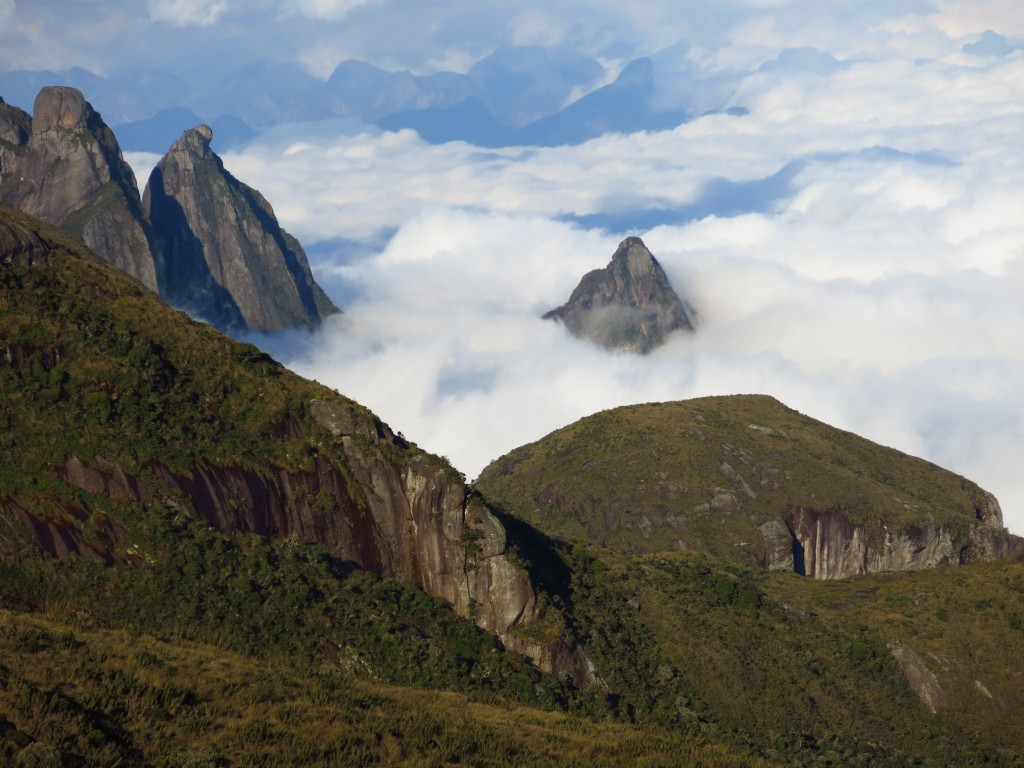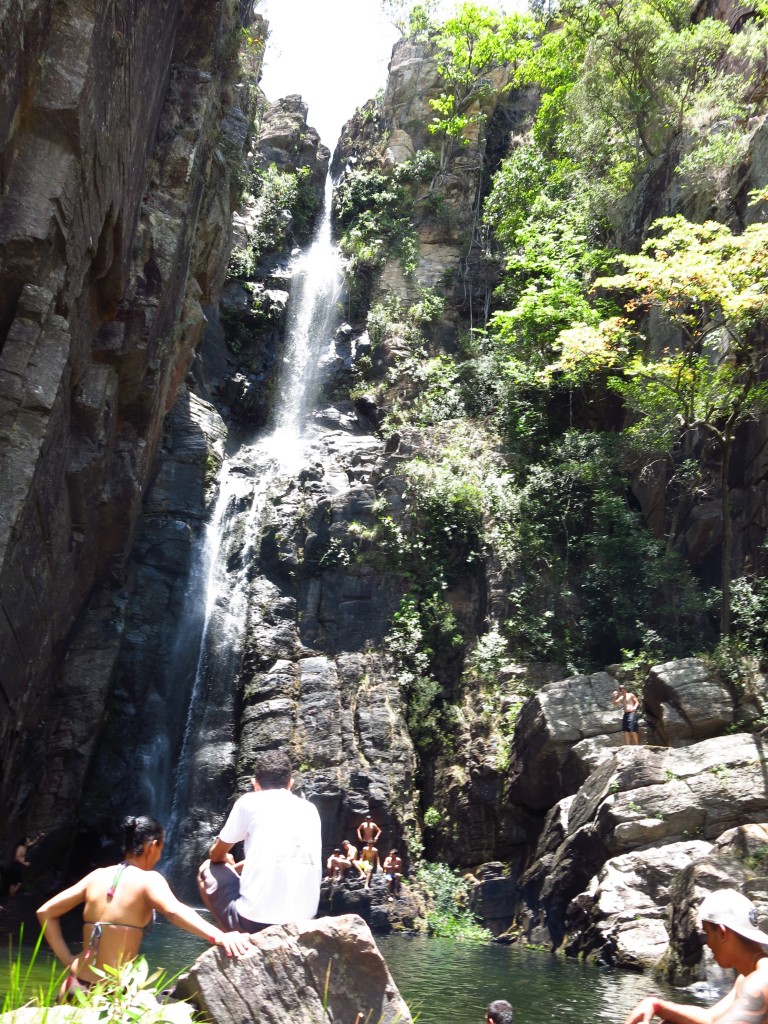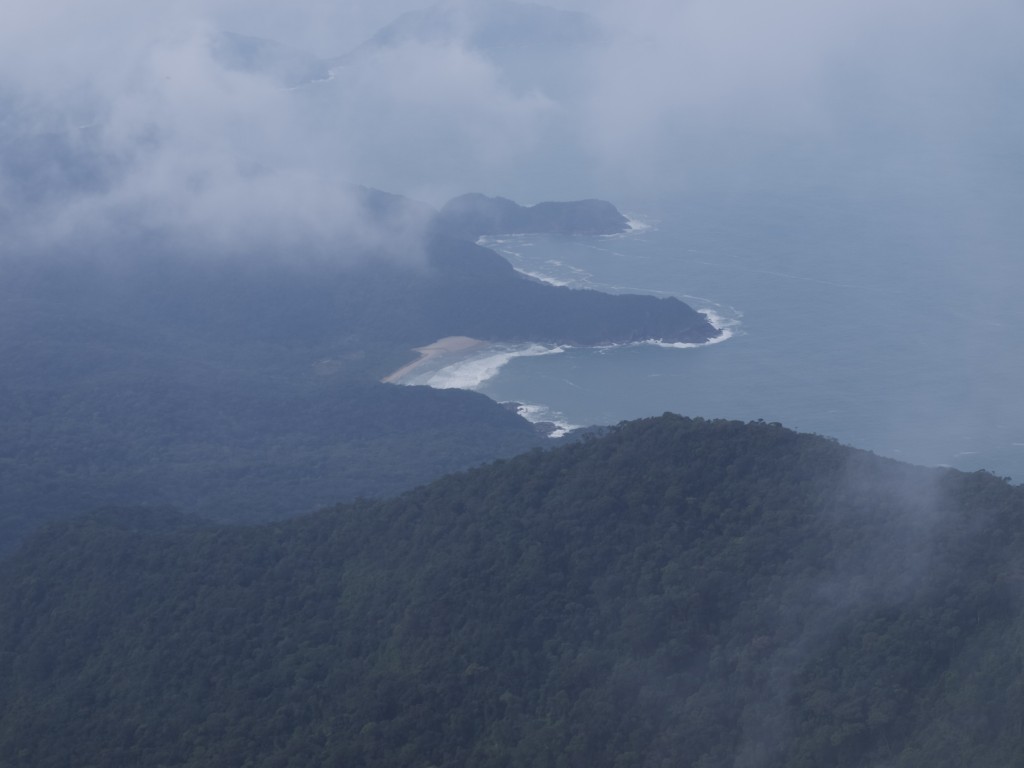Brazil is much more than its famous beaches and cities. The continent-sized country also has a vast interior, with forests, mountain ranges (serras) and plateaux (chapadas) of at times staggering beauty. One dominant feature of its more mountainous landscapes is its waterfalls – and it is at the waterfall that cultures divide.
For Brazilians, born and raised in a hot tropical country, the appeal of a cool, shady pool of water with built-in natural shower is irresistible. The waterfall – or cachoeira, in Portuguese – is often the centrepiece of their countryside experience.
There is a sort of cultura de cachoeira, or waterfall culture in Brazil – people go to bathe, to hang out, to flirt, even to have barbecues and drink beer. Men and boys dive from high rocks into narrow pools in displays of machismo. The females sit clucking with worry below.
Many waterfalls are privately owned and you have to pay to get in. There is one called Véu da Noiva (Bride’s Veil) in the Serra do Cipó, just outside the national park of the same name in Minas Gerais state, which is owned and run by the Brazilian YMCA – the Associação Cristã de Moços. It is r$27 ($11.89usd) to spend the day, there is a café and a pool, and then a short walk up a path, a big waterfall. People hang out there all day.
Go a little further, into a wild and beautiful national park that is popular with rock climbers, and there are bigger and better waterfalls like Cachoeira Grande (Big Waterfall) – but the 900 metre walk from the car park seems to put people off.
Brazilians do love sport, but hiking is not popular. Perhaps because it’s a leisure activity for those with not just time and a little extra money, but also energy to spare. Luxuries many Brazilians simply do not enjoy.
But perhaps there is a cultural element to this as well. Like many British, I grew up in a family of hikers. The British take a democratic approach to enjoying their countryside but there is also a sense in which it is there to be endured as much as enjoyed, summed up by the phrase ‘a bracing walk’.
In his book ‘Notes from a Small Island’, in which he observes the British with detached amusement, American writer Bill Bryson describes hiking up a British hill in an ice storm and eating his packed lunch in a crowd gathered in the clouds at the top.
Only the British would do something so inexplicable for fun, he notes affectionately. You’re talking about my childhood right there Bill.
Brazil’s landscape varies – from dense tropical forests to dry, spiky cerrado, or scrubland. In both, there are infinite shades of green – as a friend pointed a few years ago on a trip to the Ilha de Marajó, at the mouth of the Amazon, as we contemplated a verdant, tropical tree-line. “Look at all the different greens,” he said. I had been looking at a green curtain: it now opened to reveal rich greens, vivid greens, pale greens, shy greens, strident greens. A rainbow in one colour. Brazil in green.
But there are signs that Brazilians are increasingly enjoying their own protected areas of wild natural beauty. The country created its first national park – Itatiaia, between Rio and São Paulo – in 1937 and now has 69, of which 33 are officially open to visits. This government site lists them all and also includes national forests and areas of environmental protection.
There were 5.43 million visitors to Brazilian national parks in 2012, up from 4.781 million in 2011, and 1.802 million in 2006, according to government figures.
Rio de Janeiro’s Tijuca National Park is top of the list – with 2.536 million visitors last year, followed by the Iguaçu Falls with 1.535 million visitors. Both are easily accessible. Tijuca has waterfalls. Iguaçu is one giant waterfall.
For hikers, Brazil offers a lot more – there are three chapadas: Chapada Diamantina, in Bahia; Chapada dos Veadeiros, in Goiás; and Chapada dos Guimarães in Mato Grosso. In visits to the first two, I found plenty of Brazilians enjoying not just the easily-accessible waterfalls, but also longer trails. Brazilian guides in both chapadas tended to prefer to stick to routes they know and experienced hikers may well find a trail a guide allows a day for can easily be done in a morning.
Likewise a wonderful hike through the Serra dos Orgãos national park from Petrópolis to Teresópolis near Rio that is often done over three days but it can be done in two – with a night in the government-run hostel, on a mountain side where the sun sets above the clouds. The park is a wild and beautiful place, much of it over 2,000 metres high, and seems barely untouched by its 138,000 visitors a year. It’s a well-run wilderness. Perhaps the fact you have to bring your own food puts people off.
Our guide on a trek through the Vale do Pati in Chapada Diamantina a few years ago pointed out a number of towering, buttress-like mountains. But despite working in the park for over a decade, he said he had only ever climbed one. Partly this is because much of the land in Brazil is privately owned. And a lot of hills and mountains simply don’t have trails.
During a visit to the Chapada dos Veadeiros I found this out the hard way, after persuading my guide, a bearded young man whose nickname was ‘Caverna’, or ‘Caveman’, to go off the beaten track and take me up a nearby hill. He reluctantly agreed. We got lost in a hostile environment of cactus, thorns and sharp-edged grasses that cut you to pieces, barely compensated by the stunning views.
Caveman did not, as I would have done, stoop to saying “I told you so”, when we finally got down again. He just smiled and said that was fun.
French hikers first began exploring the trails that surround the Juatinga Peninsula Eco-Reserve, near Paraty, which is only accessible by boat or by foot. Richer Brazilians have holiday cottages there but they come by sea.
There is a big mountain in the middle of the reserve, with two forest-clad peaks over 1,000 meters: Cairuçu and Jamanta. When I climbed the first one, a gruelling four-hour ascent through damp forest, our guide was a local fisherman with a machete who said nobody had been up in a year.
On the top, the clouds parted momentarily to reveal a breathtaking view down the peninsula. The guide pointed out a single, perfect, white orchid at a vantage point a few hundred metres from the peak. No one had been here for three years, he said. Why would they, with not a waterfall in sight?
All photos Dom Phillips




